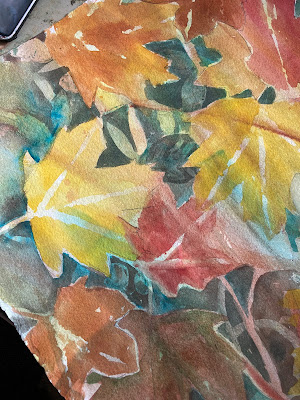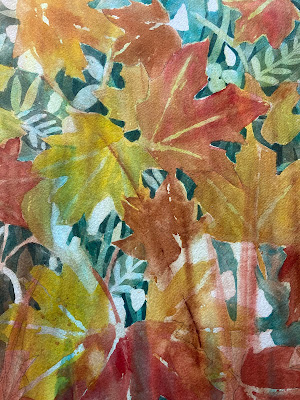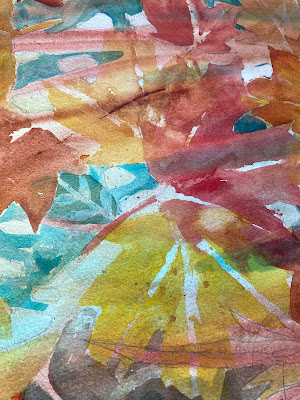I've had a blank canvas staring at me for awhile, so I decided to throw some color on it. Then one thing led to another, and now it's a full fledged work in progress.
Sometimes when I show my art, people think it's batik. The process is indeed similar to batik, where melted wax is used to block dye colors. Instead of wax and dye, however, I paint with watercolor and fluid mask. Watercolor is simply colored water, and the key to fresh, sparkling watercolor is to retain the light.
Here's the process: Sketch out the design. Paint fluid mask on the parts that need to remain white. Once the mask is dry, go ahead and paint right over it. Once the paint is dry, remove the mask and you will discover that the light areas have been saved. It's satisfying and therapeutic to peek off the mask. It balls up like rubber cement.
With this process, you can build up layer over layer of color and the light areas will remain light. Keep every layer transparent and fresh.
What would you like to see going forward? What colors or color palettes do you like? Feel free to comment your thoughts and suggestions. Until further notice I'll be in the studio "Of the Woods"





Comments
Post a Comment